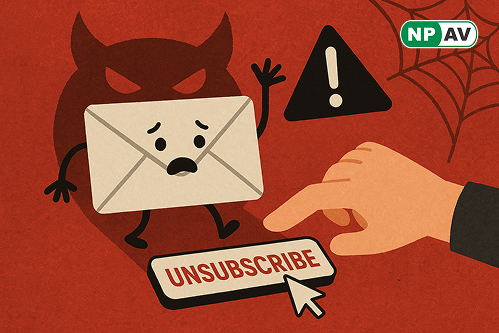Beware: Clicking Mail's ‘Unsubscribe’ Could Lead to Scams and Security Risks

What seems like a simple act of digital hygiene—clicking “unsubscribe” to declutter your Gmail inbox—may actually expose you to sophisticated scams. Cybercriminals are exploiting unsubscribe links to identify active users, harvest credentials, and deploy malware. In an age of inbox overload, experts warn against prioritizing convenience over caution.
The Hidden Dangers of “Unsubscribe” In a world inundated with promotional emails and newsletters, the unsubscribe button offers a tempting solution. However, cybersecurity experts caution that this seemingly harmless click could initiate a serious breach.
Fraudsters embed malicious “unsubscribe” links in emails not to help you, but to confirm that your email address is active—a valuable piece of data in the cybercrime marketplace. Once confirmed, your address can be resold to spam rings, used in spear-phishing campaigns, or targeted for malware delivery. The risk escalates if these links redirect you to phishing pages or prompt you to “confirm your email” or “enter your password.”


According to cybersecurity firm DNSFilter, nearly 1 in 644 unsubscribe links leads to harmful sites, a staggering statistic given the billions of emails sent daily.
How the Scam Works The scam relies on email address harvesting. By embedding code in unsubscribe buttons, scammers can track who clicks, confirming the account's activity. These addresses are then categorized as “valid” and sold in underground markets.
Many fake unsubscribe pages mimic legitimate forms, asking users to:
Enter credentials to “verify” their identity Download infected confirmation files Allow browser notifications, leading to persistent phishing ads Scammers exploit users' desire to declutter their inboxes, using psychological manipulation to make their tactics more effective.
Staying Safe:
Think Before You Click Cybersecurity experts advise: “Don’t click unsubscribe unless you trust the sender.” Instead, consider these safer alternatives:


Use native “List-Unsubscribe”: Gmail often provides a secure opt-out button linked to legitimate platforms.
Mark as spam:
This helps Gmail filter future messages from the sender automatically. Use alias or masked emails: Services like Apple’s “Hide My Email” protect your primary address. Inspect the sender’s domain: Look for spelling errors, unusual addresses, or lack of HTTPS security. For those managing business emails, email filtering rules and sandboxing tools can add extra layers of defense. Importantly, never input personal data on pages linked from an email unless verified through other means.
The Gmail unsubscribe scam serves as a potent reminder of how everyday habits can be weaponized in the digital age. As inboxes become smarter, so do scammers. Navigating this landscape requires not just better tools, but heightened awareness. While the unsubscribe button may clean your inbox, it could also jeopardize your entire digital life.






